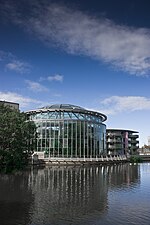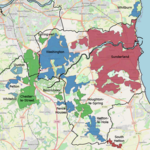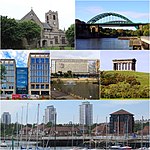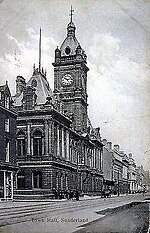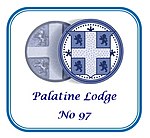Sunderland Art Gallery
Art museums and galleries in Tyne and WearMuseums in the City of SunderlandSunderlandUnited Kingdom art museum and gallery stubsUse British English from February 2023

The Sunderland Art Gallery is an art gallery based within the Sunderland Museum and Winter Gardens centre, in Sunderland City Centre. The collection of paintings includes works by the British artist, L.S. Lowry, many with local significance. For example, River Wear at Sunderland (1961) and Girl in a Red Hat on a Promenade (1972) – an enigmatic piece composed at Seaburn.
Excerpt from the Wikipedia article Sunderland Art Gallery (License: CC BY-SA 3.0, Authors, Images).Sunderland Art Gallery
Burdon Road, Sunderland Ashbrooke
Geographical coordinates (GPS) Address Phone number Website Nearby Places Show on map
Geographical coordinates (GPS)
| Latitude | Longitude |
|---|---|
| N 54.90389 ° | E -1.3801 ° |
Address
Sunderland Museum and Winter Gardens
Burdon Road
SR1 1PP Sunderland, Ashbrooke
England, United Kingdom
Open on Google Maps
